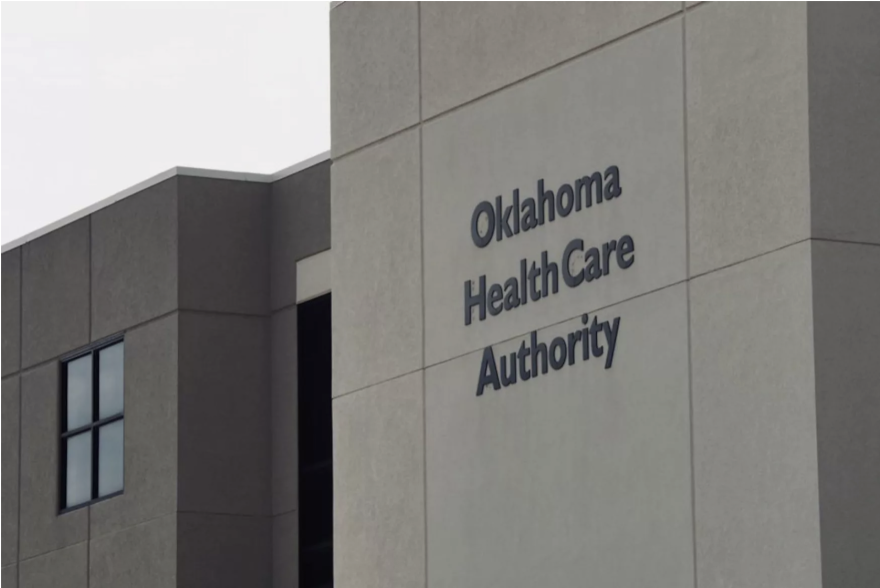As proposed cuts to Medicaid move forward through a federal budget reconciliation bill, the Oklahoma Health Care Authority outlined potential impacts to the state during its Wednesday board meeting, including work requirements and a moratorium on new or increased provider taxes.
In Oklahoma, nearly one in four Oklahomans are on Medicaid, according to the agency’s most recent enrollment data. A state-level analysis from May 16 by independent health policy group KFF found that as many as 174,000 Oklahomans could lose coverage based on federal proposals.
The analysis uses data from various sources, including projections of 2024 Medicaid spending and enrollment, U.S. Census Bureau resident population data and preliminary estimates from the Congressional Budget Office.
The bill narrowly passed the U.S. House Thursday morning with a vote of 215 to 214. It now heads to the Senate, where it will likely face more challenges.
OHCA CEO Ellen Buettner said policies OHCA was “extremely concerned about” several months ago, like major shifts in the federal government’s share of Medicaid expenditures – or Federal Medical Assistance Percentage – seem to be off the table for now.
“The focus is really around more controlling costs related to provider taxes, addressing fraud, waste and abuse, Medicaid work requirements and enhancing eligibility checks,” Buettner said. “So we're still navigating that. It'll be a process. But again, cautiously optimistic in terms of the financial impact that it could have on this organization.”
Christina Foss, OHCA’s chief of staff and newly appointed state Medicaid director, detailed the proposals as they stand.
Provider taxes and state directed payments
Foss said limitations to provider taxes and state directed payments are the “two big things” OHCA has been watching. The bill would prohibit states from establishing any new provider taxes or increasing the rates of existing taxes.
In Oklahoma, that’s called the Supplemental Hospital Offset Payment Program (SHOPP), which draws down additional federal funding to shore up underpayments in Medicaid.
The program taxes hospitals and uses collected fees to accomplish that. The total is redistributed to participating hospitals. That fee was initially set at 2.5% of each hospital’s net revenue when SHOPP was enacted and is currently at 4% as of 2024 because of Senate Bill 1045.
Oklahoma Hospital Association President and CEO Rich Rasmussen told StateImpact that amid a transition to managed Medicaid, where OHCA went from paying providers directly to paying private companies to coordinate some enrollees’ care, hospitals benefited from increased reimbursements.
Before managed care, OHCA could only draw down the difference between Medicaid and Medicare rates, totaling supplemental payments of about $800 million annually. As the state moved to managed care, it approved a methodology tied to quality improvement, allowing it to draw down closer to what commercial insurers would pay, which is the difference between Medicaid and 90% of the average commercial rate.
OHCA distributed $252.4 million in enhanced directed payments to hospitals in April 2024, which was made possible through the transition to managed Medicaid and a 2023 state appropriation, according to its state fiscal year 2024 annual report. Its new SHOPP program based on average commercial reimbursement levels also adds $500 million annually to state hospital funding and “incentivizes providers to improve access and outcomes.”
“Hospitals are no longer losing 40 cents on a dollar of cost for Medicaid,” Rasmussen said. “They're now being able to cover those costs and use the additional resources to invest in new programs.”
Another federal proposal would cap payments at 100% of the Medicare rate. Although Foss said states like Oklahoma with payment programs already drawing down closer to commercial rates would be grandfathered in.
Rasmussen said in a May 16 association message that freezing the tax rate at 4% would make it harder to keep up with market changes.
“This policy would restrict our ability to innovate further in our Medicaid program and would eventually find our payments eroding due to higher costs and inflation with no opportunity to adjust the [direct payment program],” Rasmussen said.
Rural hospitals would face the largest impact. According to April 2025 data from the Center of Healthcare Quality and Payment Reform, nine rural hospitals have closed in Oklahoma since 2005.
Sixty-seven percent of rural facilities operate with losses on services, and 59% are at risk of closing. The center’s report states that most at-risk hospitals are in isolated communities, where closures would force residents to travel long distances for emergency and inpatient care.
Foss said OHCA has heard provisions on provider taxes and directed payments “weren’t as harsh” as the agency initially thought because providers have been “making their voices heard at the capitol."
“I anticipate that will keep happening,” Foss said.
Work requirements
Foss also detailed the impacts of work requirements, with a proposal calling for 80 hours per month. The bill originally set implementation at the beginning of 2029, but a 42-page manager’s amendment released late Wednesday moved implementation to the end of 2026.
Foss said these requirements apply to "able-bodied adults without dependents." They wouldn’t apply to:
- Pregnant women
- Individuals under the age of 19 or over 64
- Foster youth and former foster youth under the age of 26
- Members of a tribe
- Individuals who are considered medically frail
- Individuals who are already in compliance with work requirements under the Temporary Assistance for Needy Families program or Supplemental Nutrition Assistance Program
- Parent or caregiver of a dependent child or an individual with a disability
- Incarcerated or recently released from incarceration within the past 90 days.
During a call with reporters last week, KFF policy analysts said most people in the Medicaid expansion population either already work or are not working for reasons that should qualify them for an exemption.
“The biggest source of savings, and likely the biggest source of loss of coverage, is the work requirement. In thinking about who gets affected by this, that is probably the most significant provision,” said Larry Levitt, KFF’s executive vice president.
“… It's important to break that down that it's not simply people who are not working who would be affected, but people who are unable to navigate the reporting requirement,” Levitt added.
Foss said OHCA's team is still putting together information on the impacts of these proposals, and they hope to know more through the summer.
StateImpact Oklahoma is a partnership of Oklahoma’s public radio stations which relies on contributions from readers and listeners to fulfill its mission of public service to Oklahoma and beyond. Donate online.









